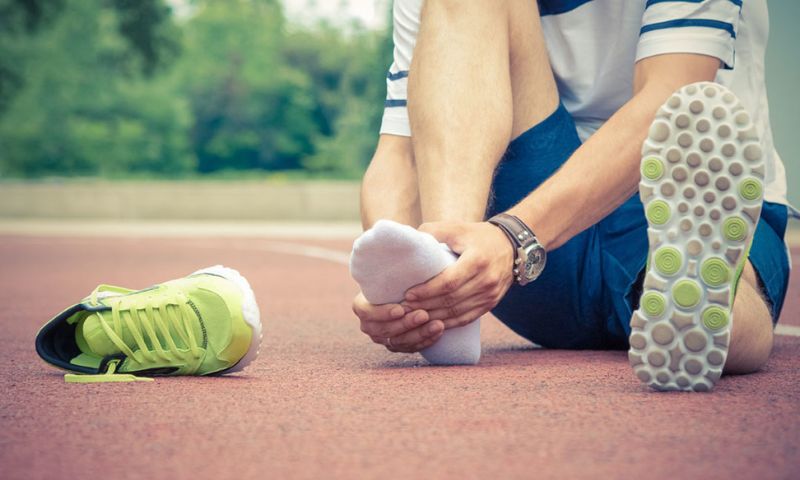Key points
- Experts stress strength training to prevent joint issues
- Non-surgical treatments growing for common sports injuries
- Staying active vital for ageing health and independence
ISLAMABAD: As populations grow older, the desire to stay active remains strong — and sports like pickleball are gaining huge popularity, especially among those aged 40 to 60. Once seen as a pastime for older adults, pickleball now boasts nearly 20 million players in the US, up from just 3.5 million in 2019.
Older adults stay active with low-impact sports like pickleball, but injuries still occur. Experts advise on how to prevent injuries and treat them when they occur. https://t.co/svVSeupVkR
— Newsweek (@Newsweek) August 7, 2025
Promoted as a low-impact sport, pickleball — along with activities like martial arts and tennis — offers older adults a way to stay fit and social. But as more people in this age group take up physical activity, doctors are reporting a sharp rise in injuries, according to Newsweek.
“It’s the fastest-growing sport in the country, especially among over-50s,” said Dr Charles DeCook, a hip and knee specialist in Georgia. “It’s more than just a game — it’s become a social lifeline.”
Unprepared muscles
However, returning to regular physical activity often exposes long-standing wear and tear in joints and muscles — issues that have developed over decades but gone unnoticed. “Many of these injuries aren’t new,” explained DeCook. “They’re chronic conditions being aggravated by new movements.”
Dr Lauren Borowski, a sports medicine specialist at NYU Langone, said common movements in sports like pickleball — such as backpedalling and quick pivots — place a surprising amount of strain on unprepared muscles. This is especially true for people who are newly active in middle age.
Sports injuries and traumas accumulate over a person’s life and can damage ligaments and cartilage, This injury, or its non-healing, causes the degenerative process to start in the joints. Regenerative Orthopedics can help. https://t.co/lp3V3tQq9Y pic.twitter.com/Fd1Fgap7tC
— Peter A. Fields, MD, DC (@TheAthleticDoc) August 3, 2025
“We’re seeing more injuries now because people who weren’t previously active are jumping into sport,” said Dr Gregory Rubin of Landmark Hospital, Florida. He has seen a rise in flare-ups of arthritis and tendonitis in older adults who have only recently started exercising.
Train before you play
To reduce the risk of injury, doctors recommend a well-rounded training programme before diving into sport. This means building strength, improving flexibility, and mixing up activities to prevent overuse.
“Weight or resistance training is vital,” said Borowski. “As we age, we naturally lose muscle — a condition called sarcopenia — so we need to work on maintaining muscle mass and strength.”
She also noted that martial arts, while demanding, can be incredibly beneficial if approached carefully. “I’ve seen people in their 40s, 50s and even 60s doing Brazilian jiu-jitsu. It’s tough, but great for mobility and strength.”
Rubin added that adults should aim for 150 minutes of moderate-intensity activity each week, plus two days of resistance training. This routine helps stabilise the core and protect against common injuries like back and knee pain.
Better treatments
Dr Robert Grumet, a sports medicine expert in California, pointed to injury prevention programmes developed for high-risk sports like football and rugby. “ACL injury prevention programmes focused on strength and joint alignment have shown strong results,” he said. “These principles can apply to older athletes too.”
While prevention is the goal, injuries still happen. The good news is, non-surgical treatments have come a long way.
“We’re using more non-invasive options like shockwave therapy, platelet-rich plasma injections, and percutaneous needle techniques,” said Borowski. These methods are helping many avoid the operating theatre altogether.
Joint replacement techniques
For those who do require surgery, modern joint replacement techniques are faster and more patient-friendly than ever. “Today, knee replacement can be an outpatient procedure,” said DeCook. “Patients walk the same day, and many are back on the Pickleball court within weeks.”
Ultimately, experts say staying active into older age is essential — not just for physical health, but also for mental well-being and independence.
“Movement is medicine,” DeCook added. “It’s our best tool against heart disease, cognitive decline, and depression. Staying active is the key to a longer, healthier, happier life.”


























